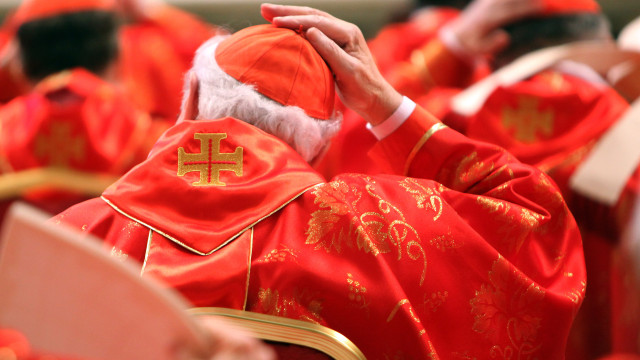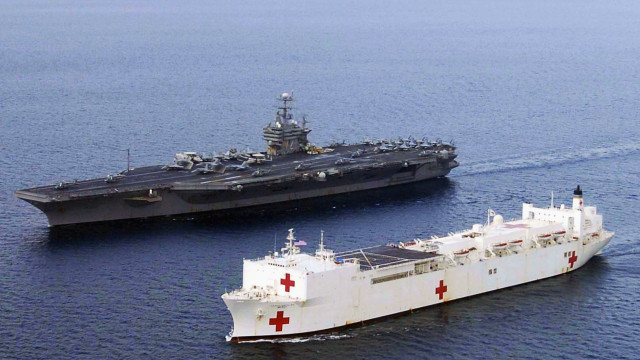





























© Getty Images
0 / 30 Fotos
Initiating the negotiations
- Peace negotiations often begin after a prolonged conflict or crisis. The need for talks is usually triggered by a ceasefire, international pressure, or the exhaustion of fighting parties.
© Getty Images
1 / 30 Fotos
The role of third parties
- Initially, third parties, such as the United Nations (UN) or international organizations, facilitate dialogue between the conflicting parties. Their role is crucial in ensuring that both sides agree to enter negotiations with a willingness to find a peaceful solution.
© Getty Images
2 / 30 Fotos
Choosing a neutral venue
- After agreeing to engage, parties often meet in neutral venues like Geneva, Oslo, or Addis Ababa, which offer a secure and impartial space for negotiations. Pictured are Ronald Reagan and Mikhail Gorbachev in Geneva, 1985.
© Getty Images
3 / 30 Fotos
Avoiding geographical advantages
- The selection of the venue plays a significant role in building trust, as it ensures that neither party has a geographical advantage. International mediators help in this process. Pictured is the signing of the Guatemalan ceasefire accord in Oslo, 1996.
© Getty Images
4 / 30 Fotos
Identifying key issues
- The first step in any negotiation is to identify the main issues at stake. These might include territorial disputes, political power-sharing, disarmament, or the return of refugees.
© Getty Images
5 / 30 Fotos
Clear points
- In some cases, economic or cultural rights may also be on the table. By clearly identifying the points of contention, both sides can prioritize their demands and start working towards a resolution.
© Getty Images
6 / 30 Fotos
Mediation
- Mediators, often representatives from neutral countries or international organizations like the UN, play a crucial role in peace negotiations. Their job is to ensure that talks remain focused, calm, and productive.
© Getty Images
7 / 30 Fotos
Bridging divides
- They help facilitate dialogue, offer solutions, and bridge divides between conflicting parties. Notably, the UN has frequently mediated peace talks, especially in post-conflict scenarios such as in the Balkans and Sudan.
© Getty Images
8 / 30 Fotos
Building confidence and trust
- In peace negotiations, trust-building is key to success. Given the history of violence, parties often harbor deep mistrust. Confidence-building measures (CBMs) are implemented early on, such as prisoner exchanges, humanitarian aid delivery, or temporary ceasefires. Pictured us an Israeli hostage reunited with family.
© Getty Images
9 / 30 Fotos
Measures for a secure dialogue
- These actions help establish a more cooperative atmosphere, where both sides feel secure enough to continue the dialogue. Pictured are Palestinians returning to Gaza, 2025.
© Getty Images
10 / 30 Fotos
Defining the framework for talks
- Before talks progress, a clear framework is set to guide the process. This includes setting timelines, outlining negotiation stages, and defining the roles of each party.
© Shutterstock
11 / 30 Fotos
A structure to the negotiations
- Both sides may agree to a roadmap, such as a phased approach to disarmament or the creation of transitional governments. The framework serves to structure the negotiation and set expectations.
© Shutterstock
12 / 30 Fotos
Negotiating key terms
- The core of peace negotiations involves the discussion and agreement of key terms. These may address territorial boundaries, governance structures, human rights protections, economic aid, and the reintegration of former combatants. Pictured is Martin McGuinness in 1998, Sinn Féin's negotiator in Northern Ireland's peace process.
© Getty Images
13 / 30 Fotos
Good Friday Agreement
- The negotiating parties must make significant compromises to reach a settlement. For example, the 1998 Good Friday Agreement required political compromise between unionists and nationalists in Northern Ireland.
© Getty Images
14 / 30 Fotos
Incorporating international law
- International law plays a significant role in peace negotiations. Human rights law, international humanitarian law, and UN charters provide a framework for determining the rights and obligations of all parties involved.
© Shutterstock
15 / 30 Fotos
Agreements of international legal standards
- Agreements made during peace negotiations often adhere to international legal standards to ensure that the deal respects global norms, such as the protection of civilians and the prevention of genocide.
© Shutterstock
16 / 30 Fotos
The role of the United Nations
- Through bodies like the UN Security Council or UN Peacekeeping Missions, the UN helps monitor ceasefires, protect civilians, and support the implementation of agreements.
© Getty Images
17 / 30 Fotos
Peacekeeping missions in Rwanda
- For example, UN peacekeepers were deployed to Rwanda after the 1994 genocide to help stabilize the region and oversee peace accords.
© Getty Images
18 / 30 Fotos
Securing an agreement
- Once the major issues are addressed, and both sides have made compromises, a formal agreement is drafted. This often includes specific commitments such as the cessation of hostilities, the establishment of transitional governments, and the provision of humanitarian aid. Pictured is an Israeli hostage being released in 2024.
© Getty Images
19 / 30 Fotos
Signed agreement
- The agreement is usually signed by the leaders of the conflicting parties, international mediators, and sometimes representatives from the UN or regional organizations. Pictured are Egyptian President Anwar Sadat, US President Jimmy Carter, and Israeli PM Menachem Begin signing the Camp David Accords, 1978.
© Getty Images
20 / 30 Fotos
Implementation of the peace deal
- Following the signing of an agreement, implementation begins. This phase often includes the demobilization of armed groups, as seen in the 2016 Colombian Peace Agreement, where FARC fighters were disarmed and victims' reparations programs were established.
© Getty Images
21 / 30 Fotos
A new political framework
- It also involves the return of displaced persons or the creation of a new political framework. Pictured is Colombian President Juan Manuel Santos and FARC leader Timoleón "Timochenko" Jiménez, shaking hands during the historical peace agreement signing in Cartagena, 2016.
© Getty Images
22 / 30 Fotos
Reconciliation and post-conflict justice
- One of the most challenging aspects of peace negotiations is addressing the issue of reconciliation. A peace agreement might include provisions for truth commissions or post-conflict justice mechanisms to deal with war crimes and human rights abuses.
© Getty Images
23 / 30 Fotos
Healing a society
- These efforts aim to heal societal divisions and provide justice to conflict victims. A key example is the Guatemalan Commission for Historical Clarification, established after the 1996 peace accords, which ended the 36-year civil war between the government and leftist insurgents.
© Getty Images
24 / 30 Fotos
Challenges of power-sharing
- In many peace negotiations, particularly in ethnically or politically divided countries, power-sharing is a central issue. Negotiations may involve the creation of coalition governments or regional autonomy.
© Getty Images
25 / 30 Fotos
Dayton Agreement
- For example, the Dayton Agreement in Bosnia and Herzegovina established a power-sharing framework that divided the country into different ethnic regions. Power-sharing arrangements are often fragile and require constant dialogue to maintain peace.
© Getty Images
26 / 30 Fotos
The role of economic incentives
- Economic incentives are crucial in peace negotiations, promoting long-term stability through joint development programs, infrastructure rebuilding, and financial aid.
© Shutterstock
27 / 30 Fotos
The Marshall Plan
- The Marshall Plan, in 1948, is a prime example. The US provided US$13.3 billion to rebuild post-war Western Europe, stabilize economies, and foster cooperation, ensuring both recovery and long-term peace in the region.
© Getty Images
28 / 30 Fotos
Ongoing monitoring and adjustment
- Even after an agreement is signed, ongoing monitoring and adjustments are crucial. Peacekeeping forces (pictured here in Cyprus), mediators, and local stakeholders ensure implementation, while additional negotiations may be needed to address emerging issues. Sources: (BBC) (France 24) (United States Institute of Peace) (World Economic Forum) See also: What is the UN Security Council?
© Getty Images
29 / 30 Fotos
© Getty Images
0 / 30 Fotos
Initiating the negotiations
- Peace negotiations often begin after a prolonged conflict or crisis. The need for talks is usually triggered by a ceasefire, international pressure, or the exhaustion of fighting parties.
© Getty Images
1 / 30 Fotos
The role of third parties
- Initially, third parties, such as the United Nations (UN) or international organizations, facilitate dialogue between the conflicting parties. Their role is crucial in ensuring that both sides agree to enter negotiations with a willingness to find a peaceful solution.
© Getty Images
2 / 30 Fotos
Choosing a neutral venue
- After agreeing to engage, parties often meet in neutral venues like Geneva, Oslo, or Addis Ababa, which offer a secure and impartial space for negotiations. Pictured are Ronald Reagan and Mikhail Gorbachev in Geneva, 1985.
© Getty Images
3 / 30 Fotos
Avoiding geographical advantages
- The selection of the venue plays a significant role in building trust, as it ensures that neither party has a geographical advantage. International mediators help in this process. Pictured is the signing of the Guatemalan ceasefire accord in Oslo, 1996.
© Getty Images
4 / 30 Fotos
Identifying key issues
- The first step in any negotiation is to identify the main issues at stake. These might include territorial disputes, political power-sharing, disarmament, or the return of refugees.
© Getty Images
5 / 30 Fotos
Clear points
- In some cases, economic or cultural rights may also be on the table. By clearly identifying the points of contention, both sides can prioritize their demands and start working towards a resolution.
© Getty Images
6 / 30 Fotos
Mediation
- Mediators, often representatives from neutral countries or international organizations like the UN, play a crucial role in peace negotiations. Their job is to ensure that talks remain focused, calm, and productive.
© Getty Images
7 / 30 Fotos
Bridging divides
- They help facilitate dialogue, offer solutions, and bridge divides between conflicting parties. Notably, the UN has frequently mediated peace talks, especially in post-conflict scenarios such as in the Balkans and Sudan.
© Getty Images
8 / 30 Fotos
Building confidence and trust
- In peace negotiations, trust-building is key to success. Given the history of violence, parties often harbor deep mistrust. Confidence-building measures (CBMs) are implemented early on, such as prisoner exchanges, humanitarian aid delivery, or temporary ceasefires. Pictured us an Israeli hostage reunited with family.
© Getty Images
9 / 30 Fotos
Measures for a secure dialogue
- These actions help establish a more cooperative atmosphere, where both sides feel secure enough to continue the dialogue. Pictured are Palestinians returning to Gaza, 2025.
© Getty Images
10 / 30 Fotos
Defining the framework for talks
- Before talks progress, a clear framework is set to guide the process. This includes setting timelines, outlining negotiation stages, and defining the roles of each party.
© Shutterstock
11 / 30 Fotos
A structure to the negotiations
- Both sides may agree to a roadmap, such as a phased approach to disarmament or the creation of transitional governments. The framework serves to structure the negotiation and set expectations.
© Shutterstock
12 / 30 Fotos
Negotiating key terms
- The core of peace negotiations involves the discussion and agreement of key terms. These may address territorial boundaries, governance structures, human rights protections, economic aid, and the reintegration of former combatants. Pictured is Martin McGuinness in 1998, Sinn Féin's negotiator in Northern Ireland's peace process.
© Getty Images
13 / 30 Fotos
Good Friday Agreement
- The negotiating parties must make significant compromises to reach a settlement. For example, the 1998 Good Friday Agreement required political compromise between unionists and nationalists in Northern Ireland.
© Getty Images
14 / 30 Fotos
Incorporating international law
- International law plays a significant role in peace negotiations. Human rights law, international humanitarian law, and UN charters provide a framework for determining the rights and obligations of all parties involved.
© Shutterstock
15 / 30 Fotos
Agreements of international legal standards
- Agreements made during peace negotiations often adhere to international legal standards to ensure that the deal respects global norms, such as the protection of civilians and the prevention of genocide.
© Shutterstock
16 / 30 Fotos
The role of the United Nations
- Through bodies like the UN Security Council or UN Peacekeeping Missions, the UN helps monitor ceasefires, protect civilians, and support the implementation of agreements.
© Getty Images
17 / 30 Fotos
Peacekeeping missions in Rwanda
- For example, UN peacekeepers were deployed to Rwanda after the 1994 genocide to help stabilize the region and oversee peace accords.
© Getty Images
18 / 30 Fotos
Securing an agreement
- Once the major issues are addressed, and both sides have made compromises, a formal agreement is drafted. This often includes specific commitments such as the cessation of hostilities, the establishment of transitional governments, and the provision of humanitarian aid. Pictured is an Israeli hostage being released in 2024.
© Getty Images
19 / 30 Fotos
Signed agreement
- The agreement is usually signed by the leaders of the conflicting parties, international mediators, and sometimes representatives from the UN or regional organizations. Pictured are Egyptian President Anwar Sadat, US President Jimmy Carter, and Israeli PM Menachem Begin signing the Camp David Accords, 1978.
© Getty Images
20 / 30 Fotos
Implementation of the peace deal
- Following the signing of an agreement, implementation begins. This phase often includes the demobilization of armed groups, as seen in the 2016 Colombian Peace Agreement, where FARC fighters were disarmed and victims' reparations programs were established.
© Getty Images
21 / 30 Fotos
A new political framework
- It also involves the return of displaced persons or the creation of a new political framework. Pictured is Colombian President Juan Manuel Santos and FARC leader Timoleón "Timochenko" Jiménez, shaking hands during the historical peace agreement signing in Cartagena, 2016.
© Getty Images
22 / 30 Fotos
Reconciliation and post-conflict justice
- One of the most challenging aspects of peace negotiations is addressing the issue of reconciliation. A peace agreement might include provisions for truth commissions or post-conflict justice mechanisms to deal with war crimes and human rights abuses.
© Getty Images
23 / 30 Fotos
Healing a society
- These efforts aim to heal societal divisions and provide justice to conflict victims. A key example is the Guatemalan Commission for Historical Clarification, established after the 1996 peace accords, which ended the 36-year civil war between the government and leftist insurgents.
© Getty Images
24 / 30 Fotos
Challenges of power-sharing
- In many peace negotiations, particularly in ethnically or politically divided countries, power-sharing is a central issue. Negotiations may involve the creation of coalition governments or regional autonomy.
© Getty Images
25 / 30 Fotos
Dayton Agreement
- For example, the Dayton Agreement in Bosnia and Herzegovina established a power-sharing framework that divided the country into different ethnic regions. Power-sharing arrangements are often fragile and require constant dialogue to maintain peace.
© Getty Images
26 / 30 Fotos
The role of economic incentives
- Economic incentives are crucial in peace negotiations, promoting long-term stability through joint development programs, infrastructure rebuilding, and financial aid.
© Shutterstock
27 / 30 Fotos
The Marshall Plan
- The Marshall Plan, in 1948, is a prime example. The US provided US$13.3 billion to rebuild post-war Western Europe, stabilize economies, and foster cooperation, ensuring both recovery and long-term peace in the region.
© Getty Images
28 / 30 Fotos
Ongoing monitoring and adjustment
- Even after an agreement is signed, ongoing monitoring and adjustments are crucial. Peacekeeping forces (pictured here in Cyprus), mediators, and local stakeholders ensure implementation, while additional negotiations may be needed to address emerging issues. Sources: (BBC) (France 24) (United States Institute of Peace) (World Economic Forum) See also: What is the UN Security Council?
© Getty Images
29 / 30 Fotos
What actually happens in peace negotiations?
Understanding the key steps in peace talks
© Getty Images
Peace negotiations are complex and delicate, involving a range of political, military, and diplomatic efforts. Currently, the ongoing Russia-Ukraine conflict and the Israel-Hamas war highlight the challenges in reaching lasting agreements.
Ukrainian President Volodymyr Zelenskyy recently expressed willingness to trade Russian-occupied land for Ukrainian territory, while emphasizing the need for reliable security guarantees. The involvement of international leaders and negotiators, including figures like Donald Trump, continues to shape these discussions. Understanding these steps provides insight into the intricacies of conflict resolution and the path to peace.
Click on to understand what actually happens in peace negotiations.
RECOMMENDED FOR YOU




































MOST READ
- Last Hour
- Last Day
- Last Week








